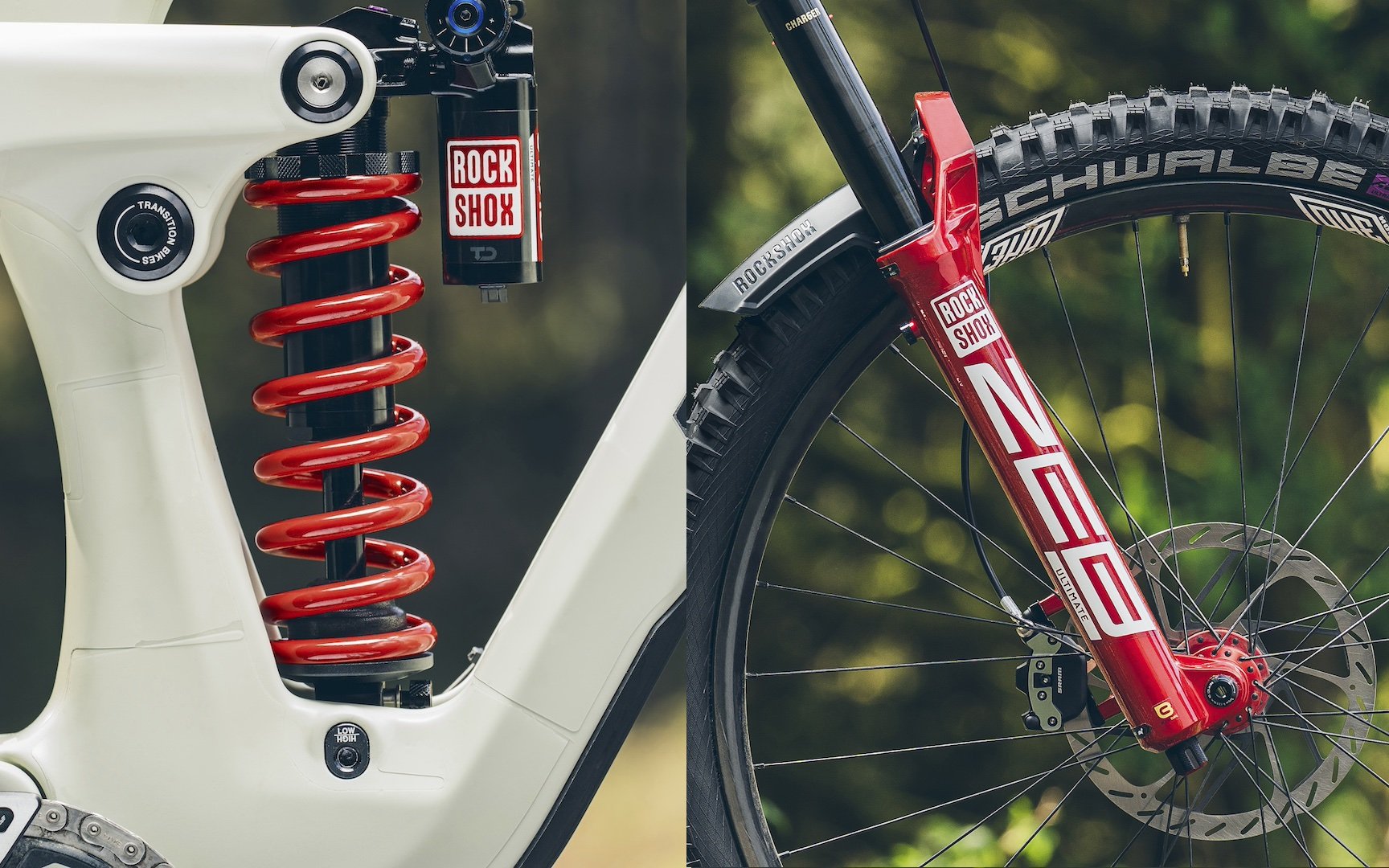
First Impressions Review
2025 RockShox Vivid Coil and Zeb Ultimate Fork
Zeb Ultimate for 2025
A new Zeb? Well, not completely new. Actually not even mostly new, but somewhat new. The surprising thing to me is that the 180mm version of the Zeb Ultimate I'd been riding on the Norco Range VLT test bike, before this one arrived, is a very impressive specimen. It has excellent support through the middle of the stroke and stays active and responsive deeper in the travel when there are repeated high intensity impacts. On my first couple of rides I would brace myself for impact when facing a particularly deep hole or square-edged bump and was surprised when it never came.
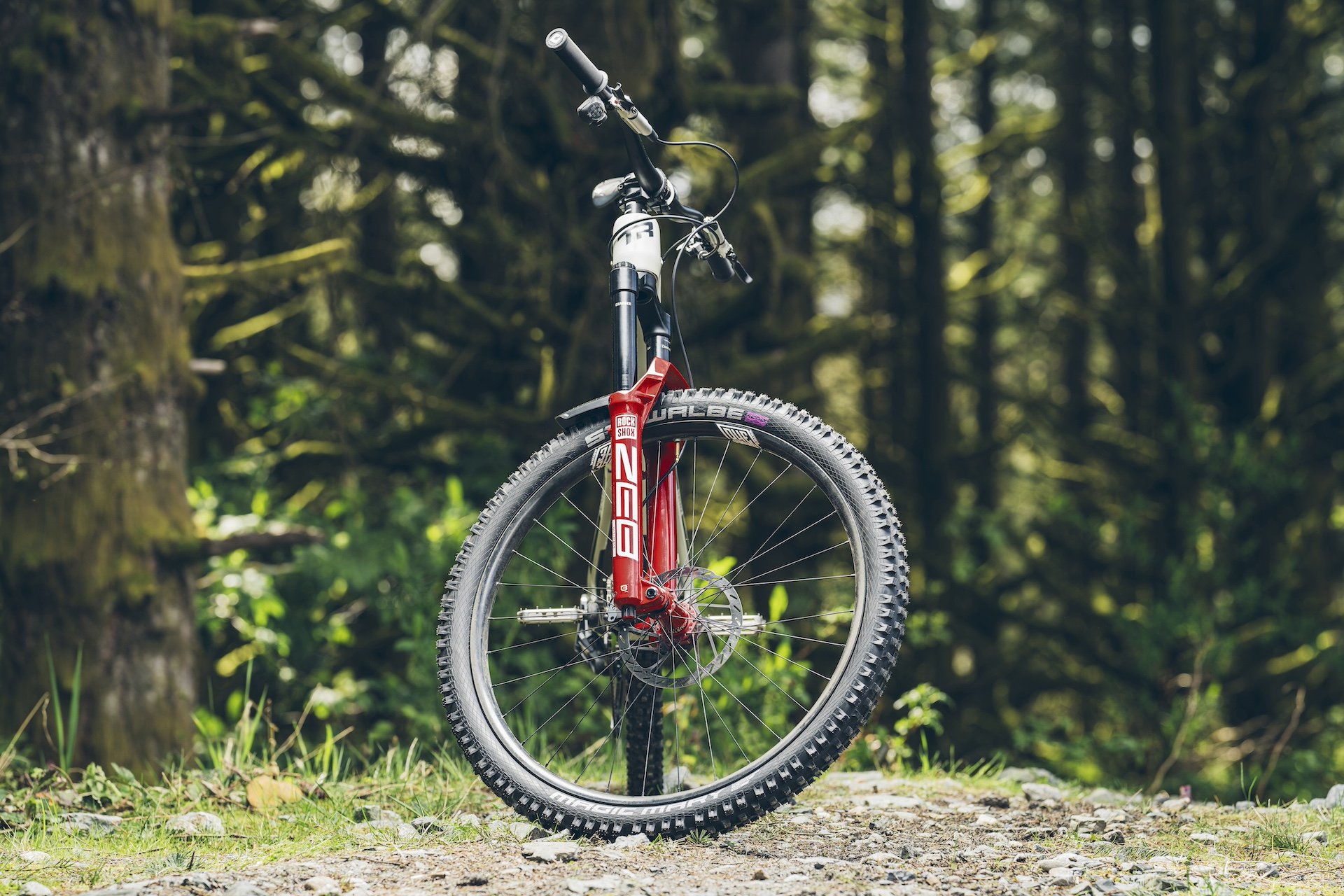
If you go crazy for red, the new features on the 2025 Zeb Ultimate may just be added bonuses.
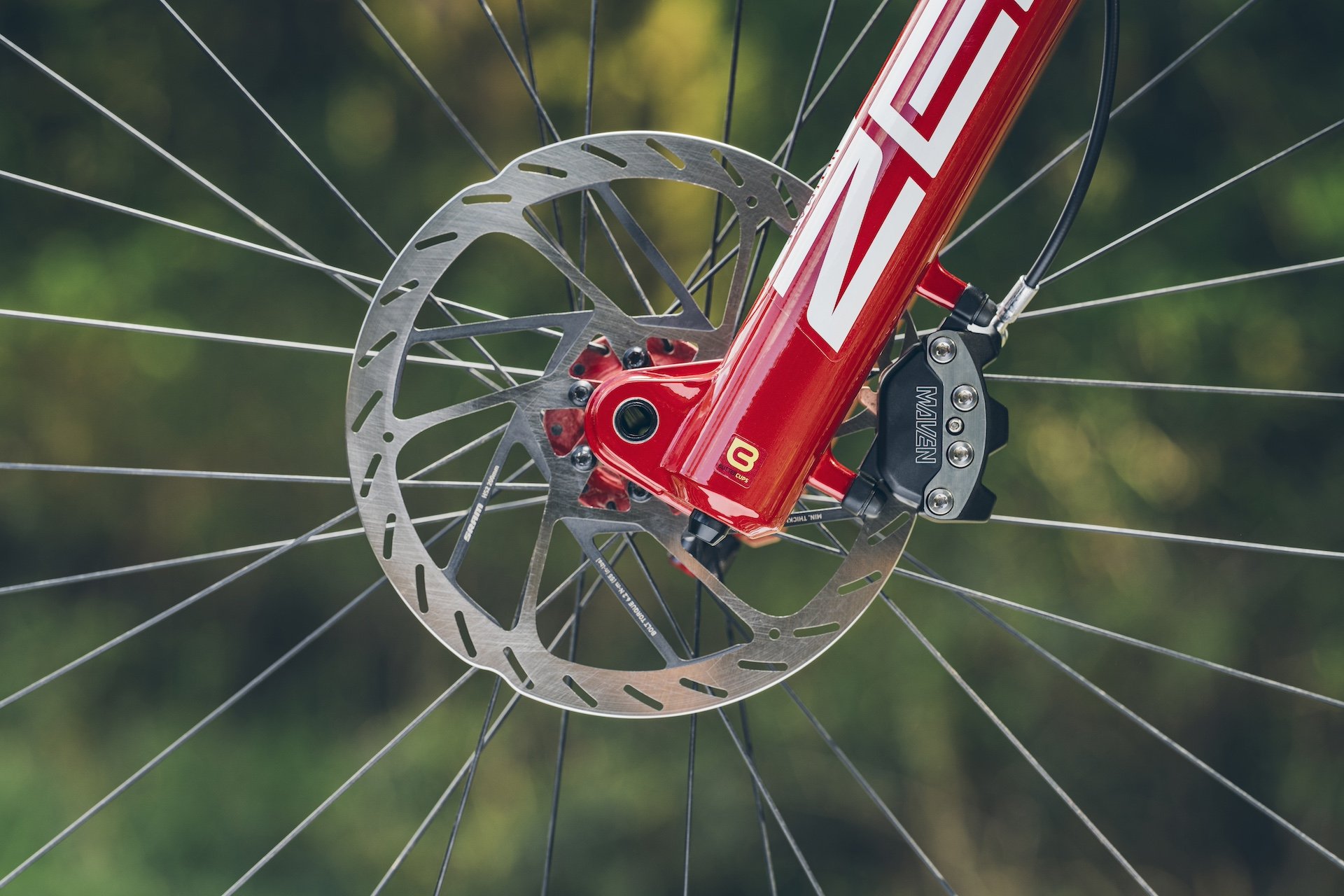
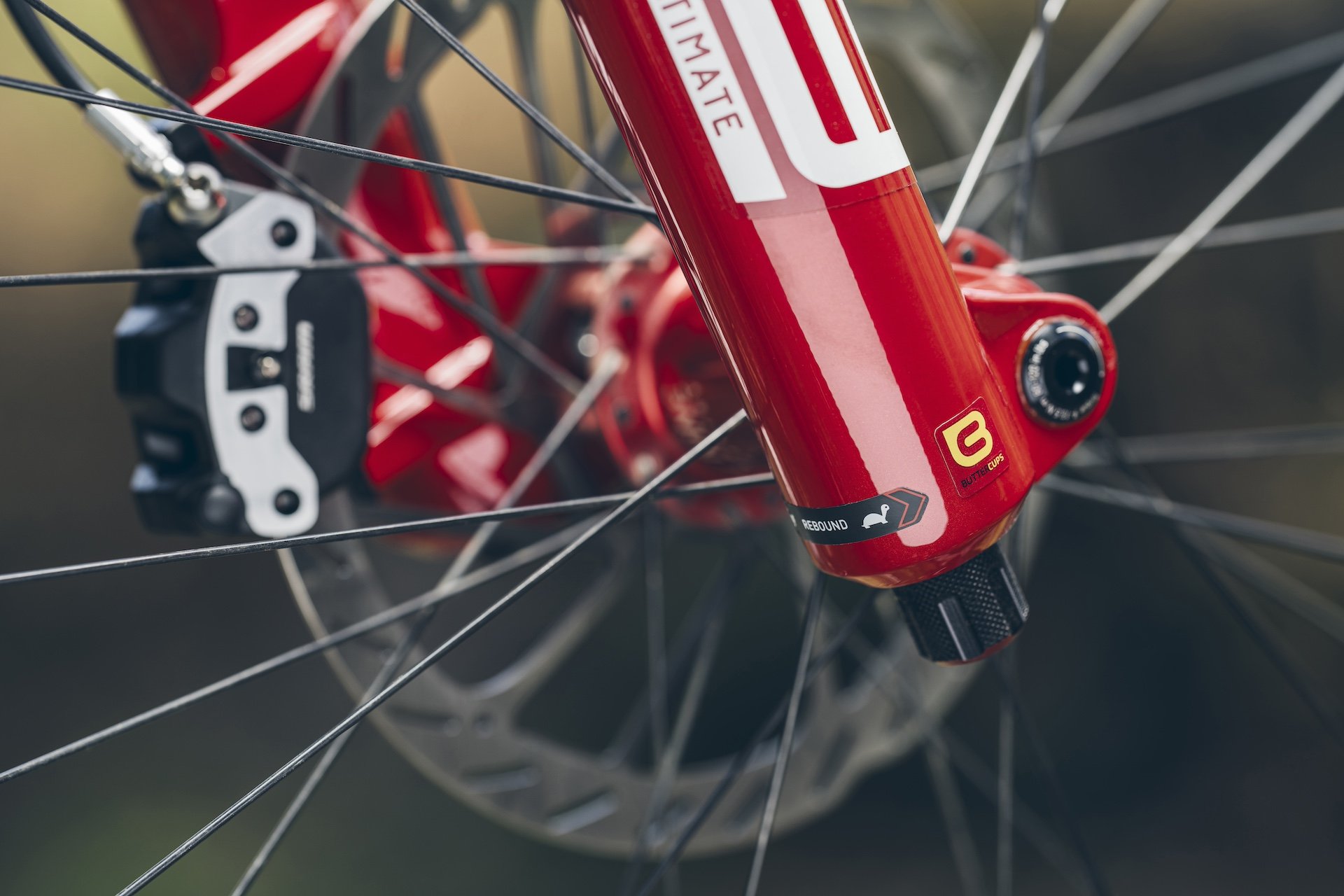
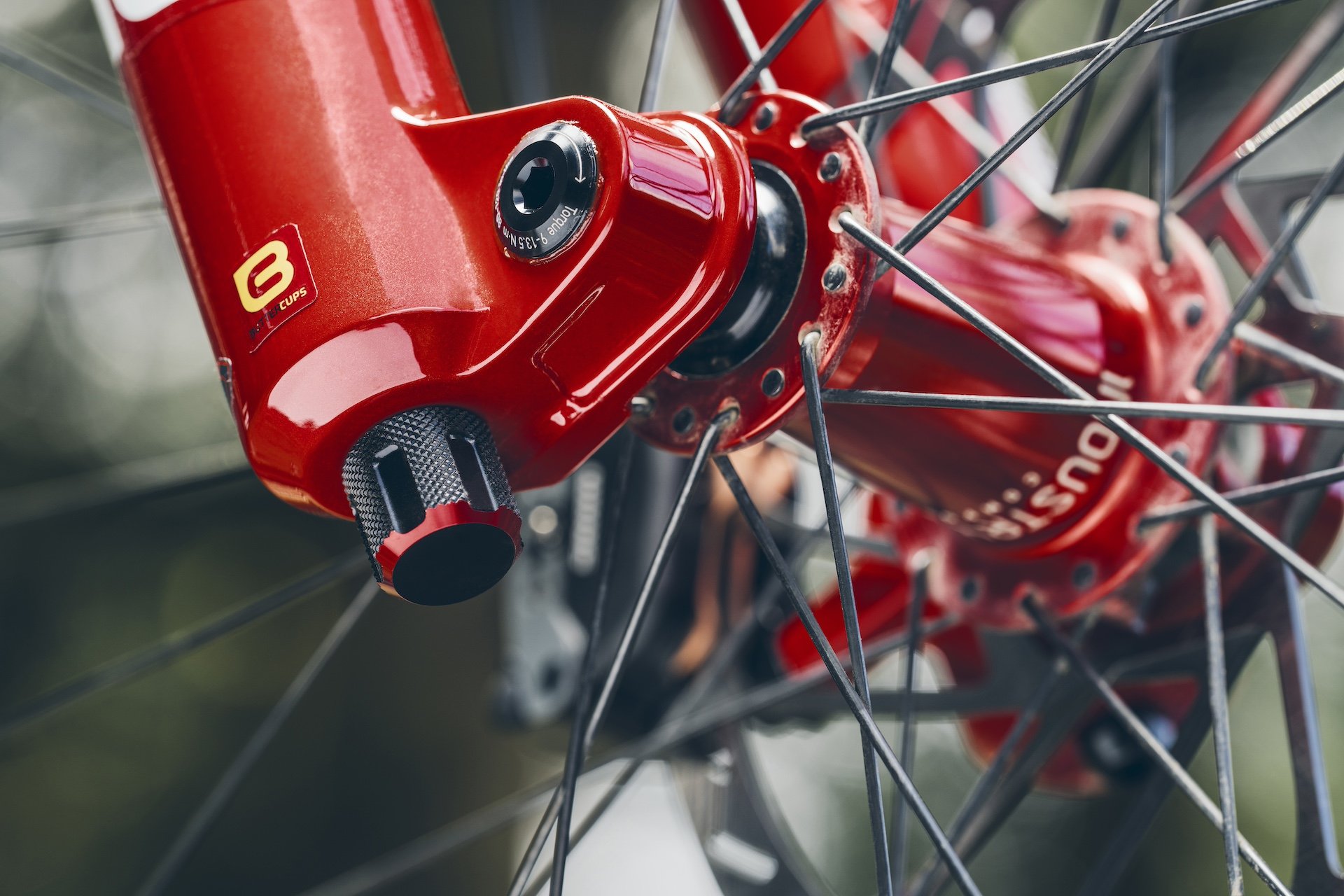
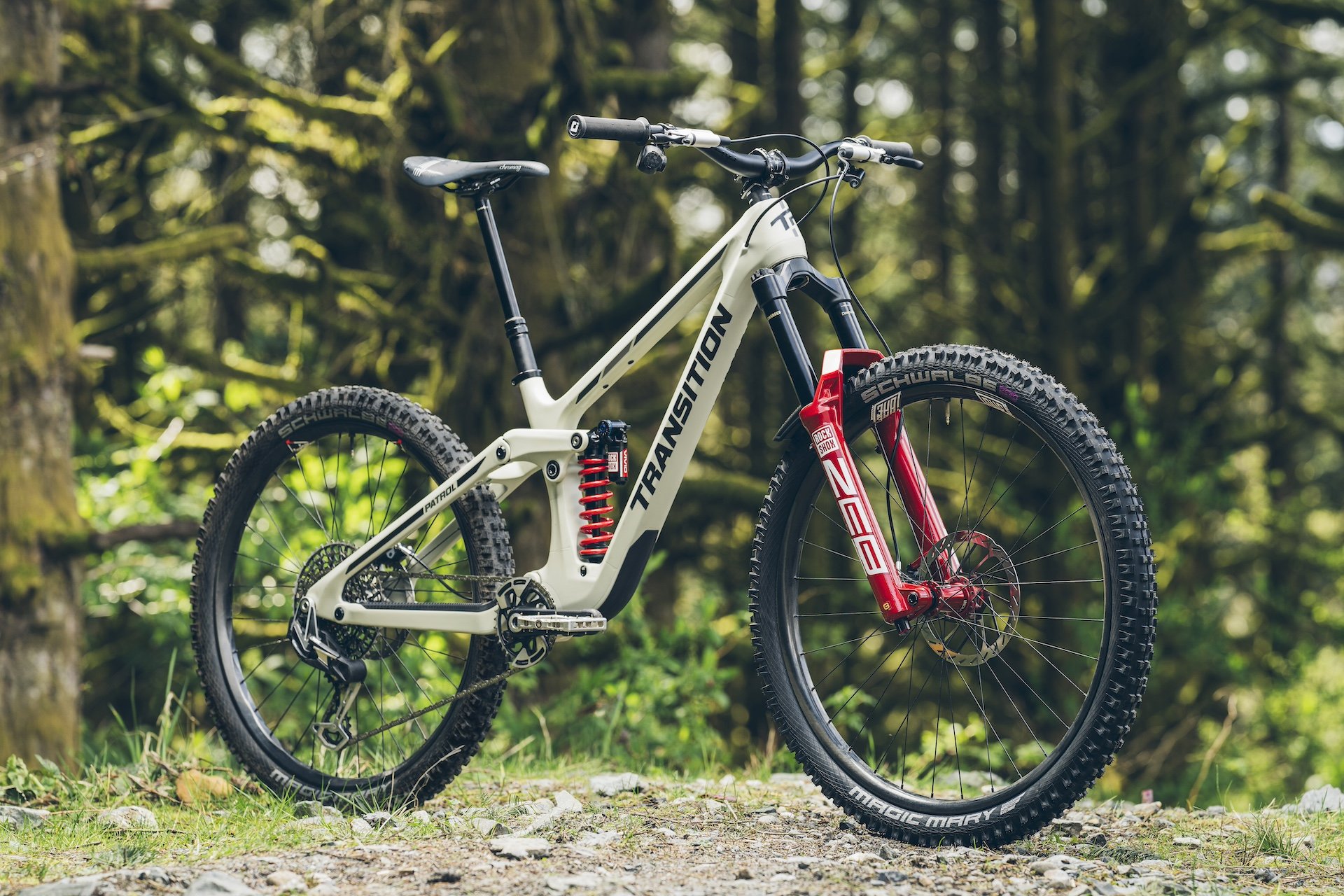
This isn't a big surprise I suppose, considering how happy I have been with the Charger 3.0 damper and, to a lesser extent, the addition of Buttercups. While the terrain I ride most often is suitable for lots of travel, I'd never ridden a Zeb 180 before this either. Adding 10mm of travel and running a little less air pressure and damping, in the right terrain, feels great.

Hannah Bergmann riding for the camera after riding some badass lines at Redbull Hardline.
What is Actually New?
So how do you take an already great product and make it better? This is a case of Kaizen, the concept, adopted by Japanese industry in the recovery from WWII, of small and constant improvement. The new damper range doesn't provide much for me because I don't need more adjustment range on the Zeb (current settings on Zeb 180 62 PSI HSC-2 clicks out, LSC 8 clicks out, LSR 10 clicks out). Those who were topped out or bottomed out with either rebound or compression - or both - should be well served.
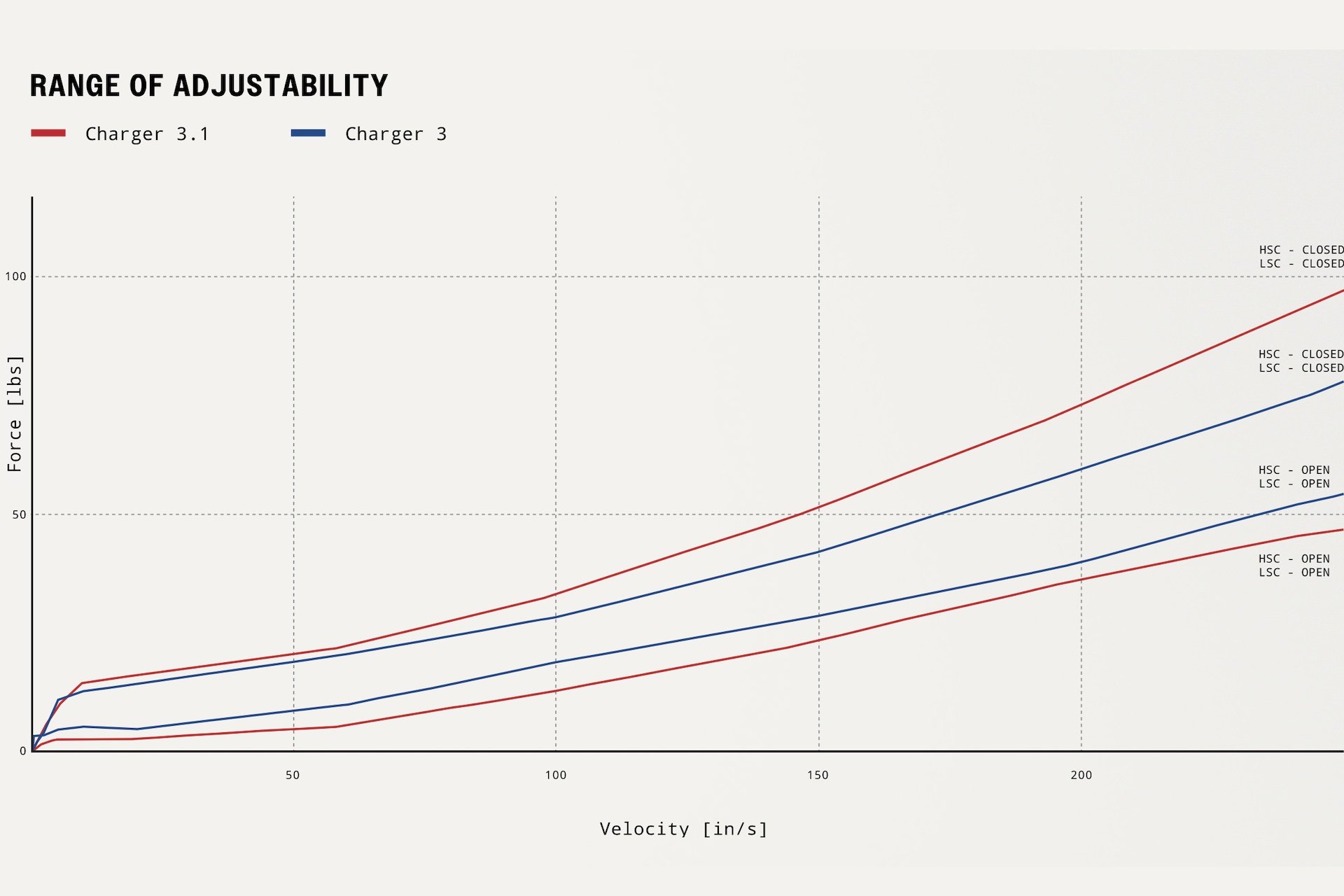
A graph provided by RockShox showing the extended damper range of the 2025 Zeb with the Charger 3.1 Damper.
There is a measurable increase in the rebound speed of the 2025 Zeb when the knob is fully open, a 68% increase according to RockShox's measurement. If you want to go even faster you can do that by changing the shim stack. The closed position allows the same flow as the Charger 3.0. but it ends up provided slightly less damping because of the reduction in the system's friction.
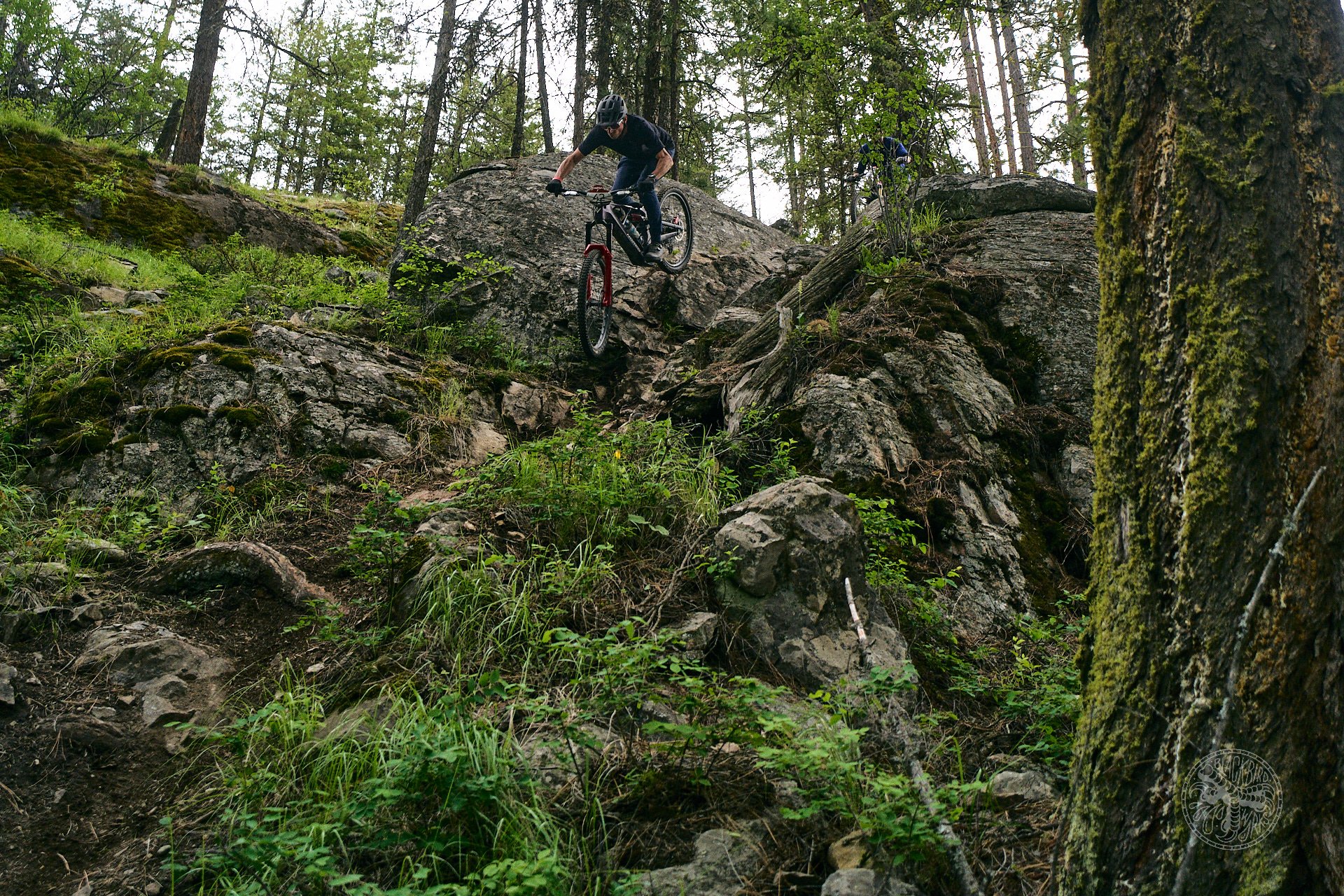
You could call this photo a mock up since I didn't have the red Zeb yet (and it doesn't have black graphics) but I didn't have time to get a shot of the fork before today and I asked Deniz to have some fun with photoshop. The Vivid Coil is legit however. Photo - Deniz Merdano
2025 Zeb on Trail
I have only had two rides on the new Zeb but they were telling. The first one was surprising because the fork felt great right away. Usually a brand new fork feels a little stiff out of the box because fresh seals are sticky and lubrication hasn't circulated much. Instead, response off the top was excellent and everything felt nice and smooth. I didn't notice any difference between the new fork and the one I'd been riding for a couple of weeks, which is a very good sign.
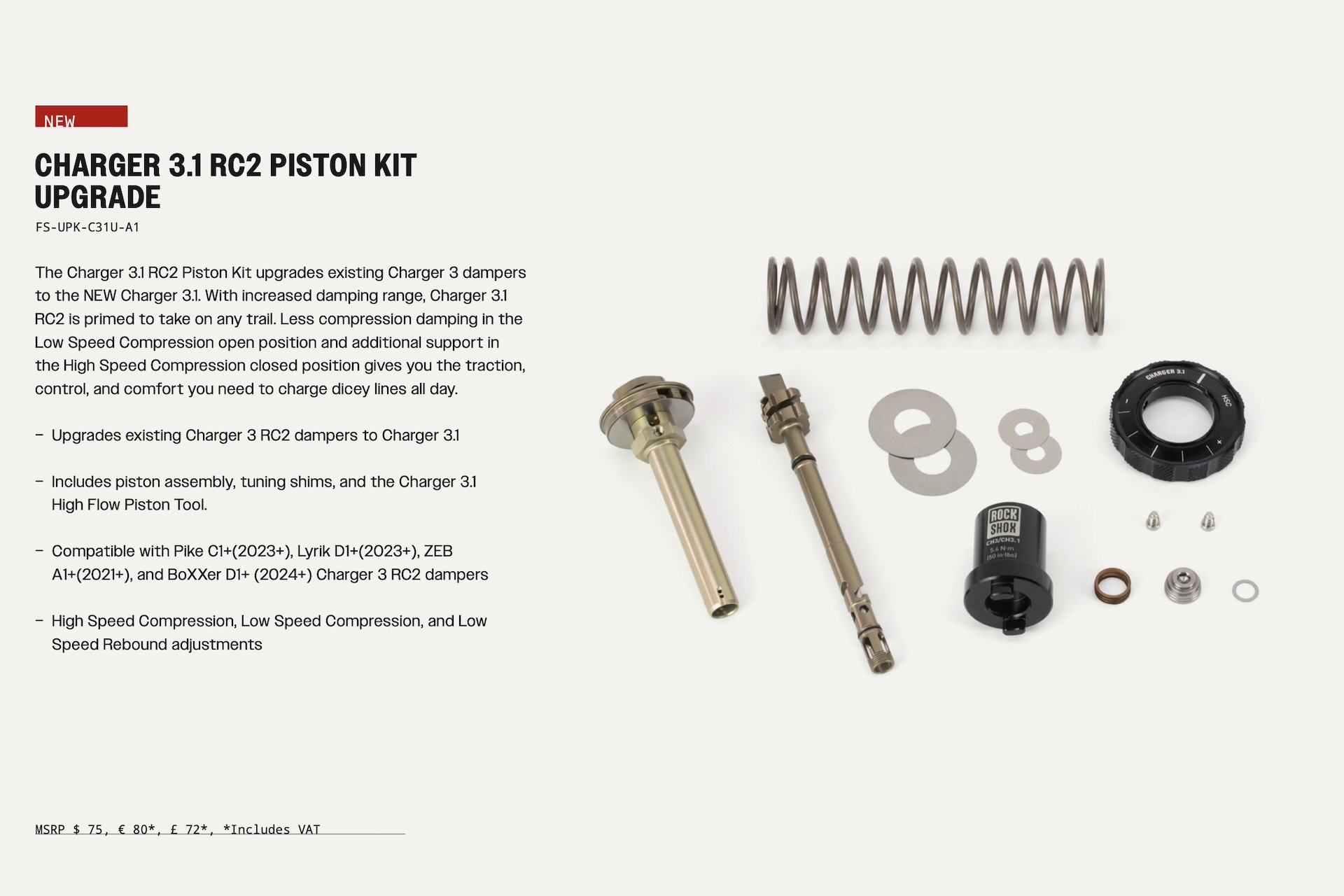
Instead of planned obsolescence, RockShox gives you optional upgrades at a reasonable price this time around. For 75 USD, riders who need increased damper range can get more out of their knob turning.
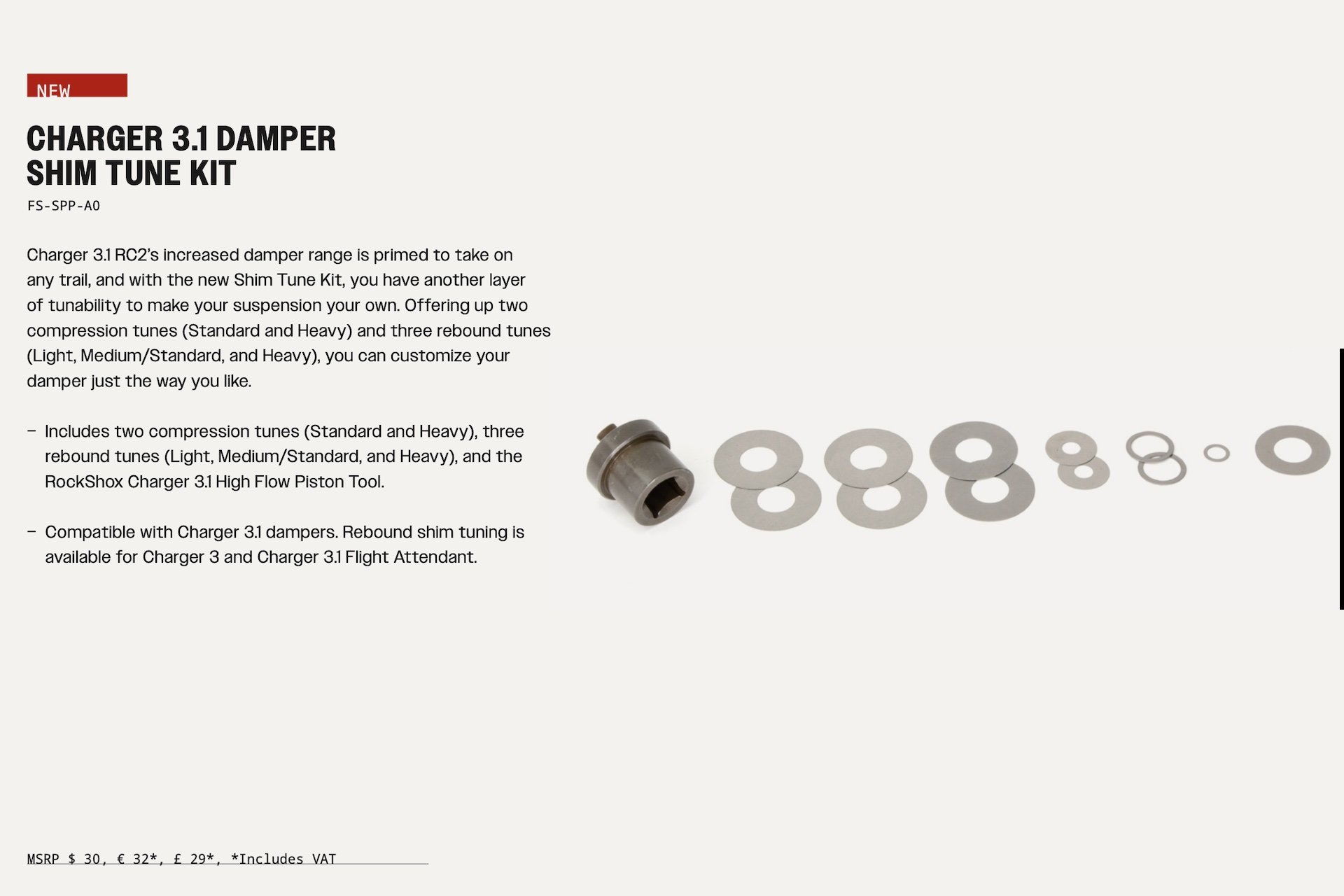
If you want more significant change to your rebound tune you'll need to pick up a shim stack as well. This could be of interest to both heavier and lighter riders as well as those who ride very aggressively. I seem to be in the sweet spot already - and apparently I don't ride hard enough.
On my second ride I decided to up the pressure a little. I'd been very happy with the settings mentioned above, at 62 PSI, but that reduced friction should let me up the pressure some for more support without impacting small bump compliance. I pumped it to 66 without any consequences and gave myself a little more margin for error deep in the stroke when things go sideways. Obviously two rides doesn't give me much to work with and the big story here is for riders needing more damping range, but so far I'm impressed with RockShox's effort to reduce friction in the system, and very happy on the red Zeb.
The two Zeb models available in the aftermarket are listed below but there is also a Zeb Select+ and a plain old Zeb you might see on new bikes.
Zeb Ultimate Details
DAMPER: Charger 3.1 RC2 w/ButterCups
SPRING: DebonAir+ w/ButterCups
WHEEL SIZE: 27.5”, 29”
TRAVEL: 150mm, 160mm, 170mm, 180mm, 190mm
OFFSET: 38mm (27.5”), 44mm (27.5”, 29”)
WEIGHT: 2,341g
MSRP: $ 1,159, € 1,249*, £ 1,119*
*includes VAT
Zeb Select Details
DAMPER: Charger RC
SPRING: DebonAir+
WHEEL SIZE: 27.5”, 29”
TRAVEL: 150mm, 160mm, 170mm, 180mm, 190mm
OFFSET: 38mm (27.5”), 44mm (27.5”, 29”)
WEIGHT: 2,309g
MSRP: $ 896, € 968*, £ 864*
*includes VAT
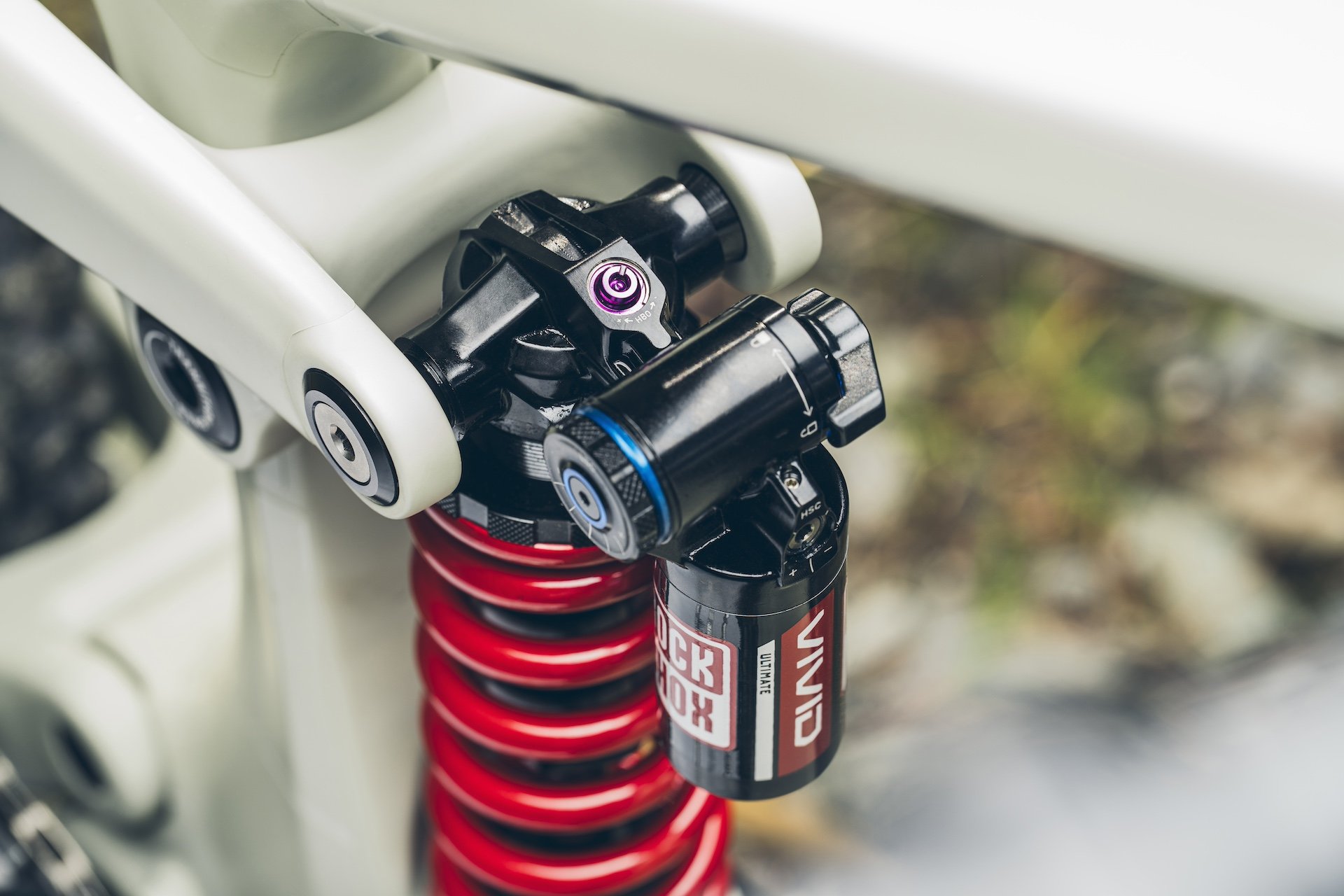
Moar red!
Vivid Coil Ultimate vs. Vivid (air) Select+
My first rides on the new Vivid Select+ (air) were immediately before the Vivid Coil was installed and I was already impressed. It has a very coil-like feel thanks to its large volume and it is very responsive at the top end of the stroke. It has the smooth and floaty feel of coil but with a little more support through the meat of the travel. I found this to be great for popping off wedges and generally keeping the bike higher in its travel wheel still dealing well with higher intensity impacts.
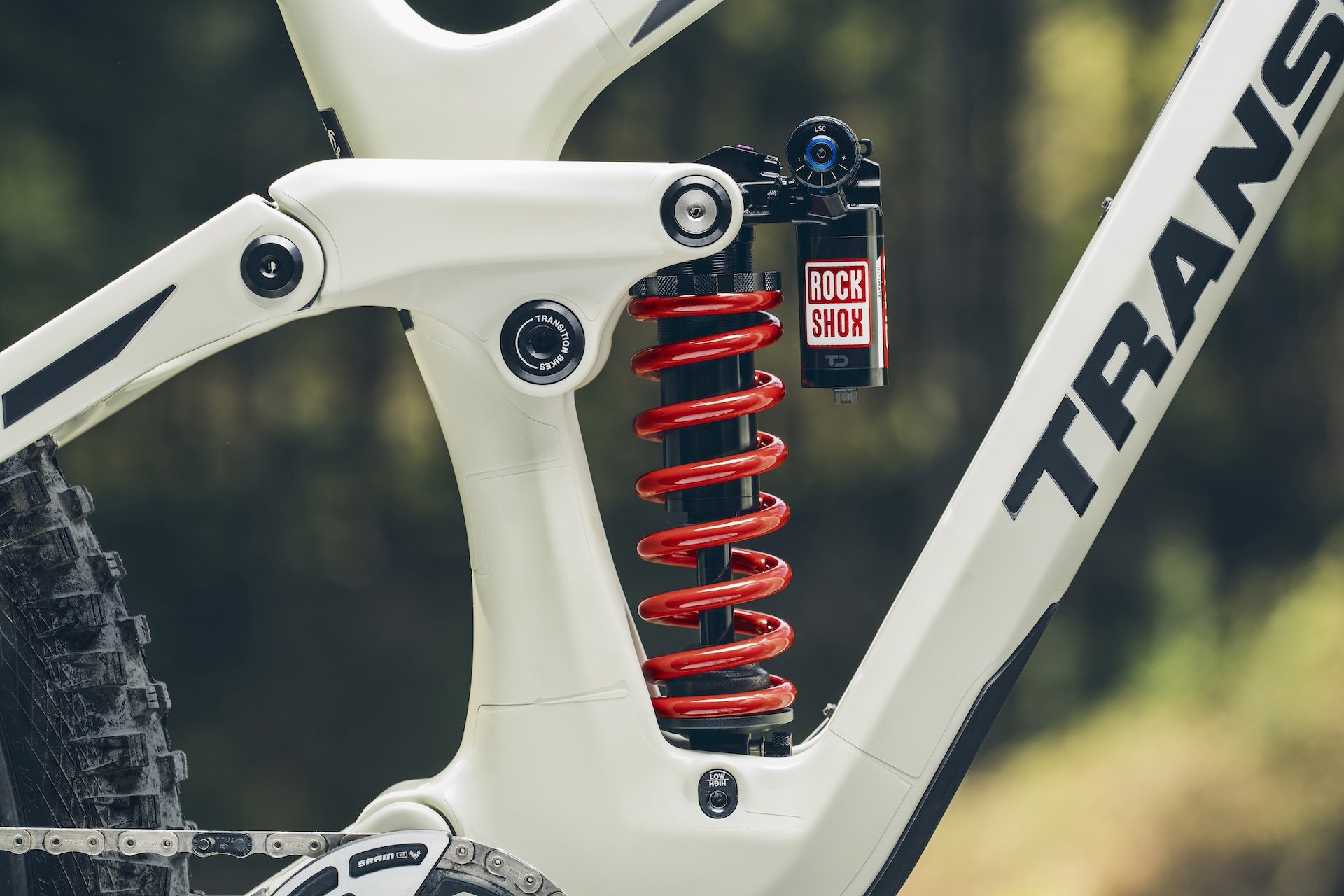
The red works well against Hannah's bone coloured Transition.
In fact, there were a few sections of trail that I felt like I was riding faster than ever and with as much or more control as I had previously on the Vivid (air) Ultimate. So these were big shoes to fill. Obviously part of this relates to the suspension layout and design and the Range VLT has a high pivot with idler pulley designed to isolate the suspension from pedalling forces and soften square edges thanks to a partially rearward axle path. So much of the credit goes to Norco's work here, but a good design will only get you so far without a competent damper.
My first rides on the Vivid Ultimate Coil were on a very long descent near Princeton in B.C.'s Okanagan and then three days in Naramata at Megavolt where the terrain is often very fast, sometimes quite smooth, but often bony and strewn with square-edged bumps. It's a demanding arena for suspension.
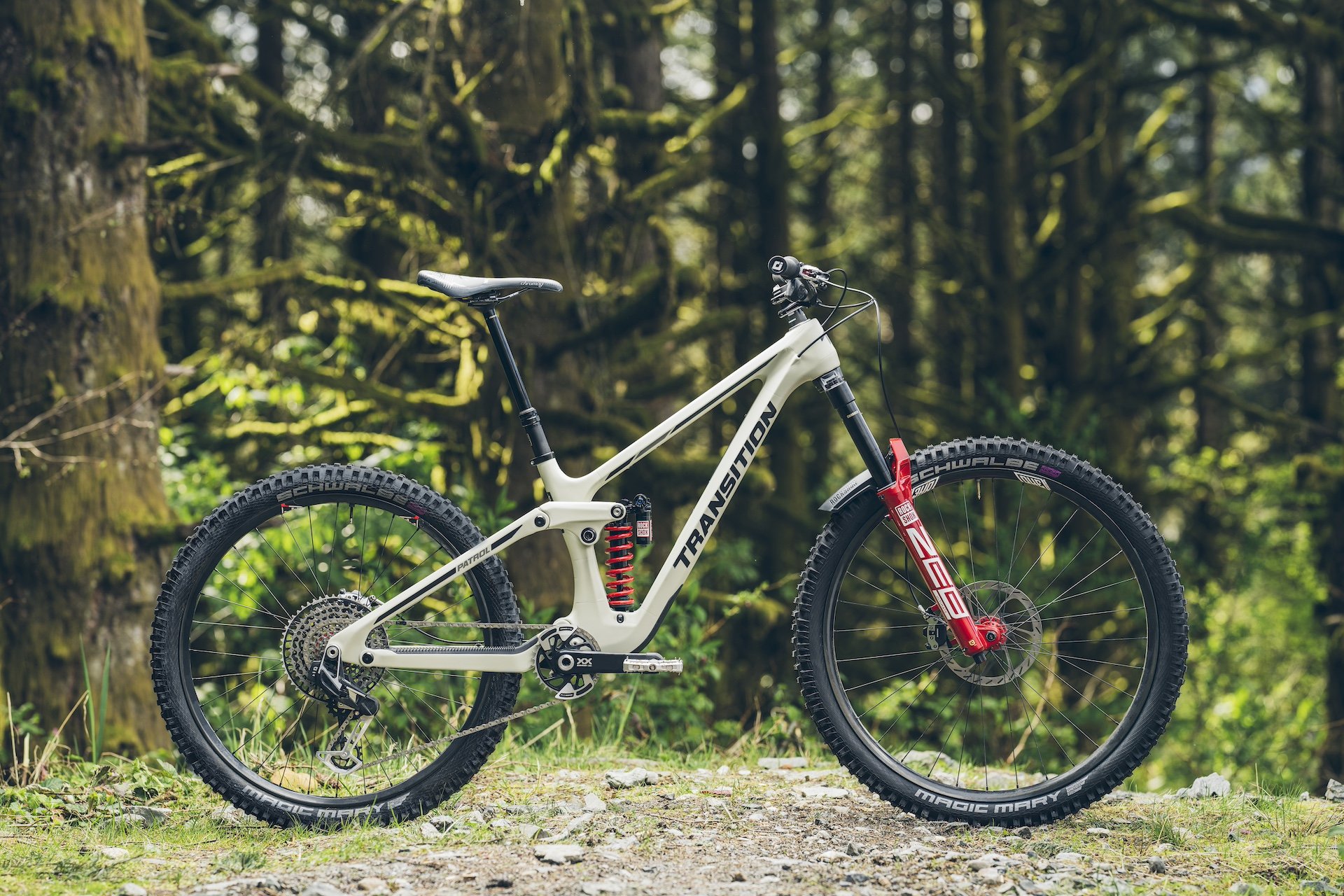
On the 1350 metre (4500') descent there were many sections where the soil was loose but contained to a narrow line so you could float and drift and generally laugh your ass off at high speed. The Vivid Coil felt great here but the requirements weren't very demanding, and I'm sure the Vivid air would have given me a similar impression. I didn't notice any degradation related to heat at all after long sections of trail.
Naramata was a new ballgame but the shock performed extremely well, particularly in very rough and rocky sections. It gets into the travel even more easily than the Vivid air and I felt like I could carry speed very well. I had no issues with bottom out in Naramata but the bike felt a little more glued to the ground than I'd like. I missed the comparatively poppy feel of the Vivid Air when trying to lift over obstacles or pull for backsides.
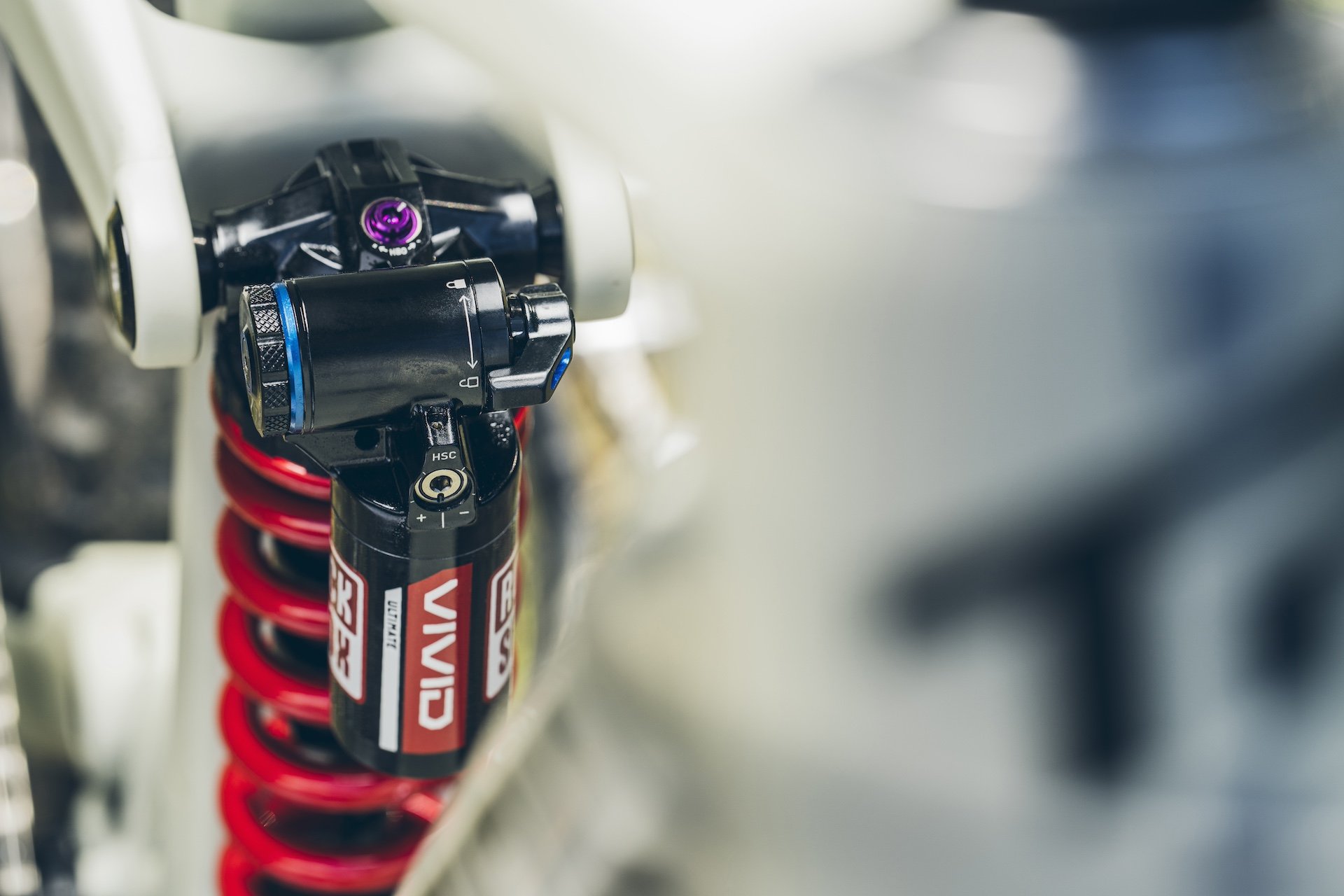
The purple fitting controls the Hydraulic Bottom Out with five positions; neutral and then 1 or 2 clicks more or less damping.
I was on a 375 lb spring for 25% sag on the Range VLT. The spring rate felt bang on in most circumstances but not all. As mentioned earlier, I missed the support of the air spring but a second situation was when pedalling through rough sections. The Range's wheel path has a significant rearward portion which could make it less responsive in those situations but it felt to me like I was getting too deep into the travel. I didn't have a chance to compensate with any knob twisty but Chris Mandell's response was, "with an air shock you could fine tune your spring rate by adding a couple of pounds of pressure, something that isn't an option with a coil." He thought a little more rebound damping could have helped and some tuning likely would have produced a result, but I hadn't noticed this same issue with the Vivid air. At the same time this was in a competitive situation so I was pedalling harder through sections than I would when just riding with buddies but if you are a competitive rider this may be something to consider. I'll keep working on my settings and see how it feels in similar situations.

Touchdown
Touchdown is a damping feature on the compression side that reduces breakaway force for the first 10% of your travel before the main damping (controlled by the HSC dial) is engaged. Since this is less than your sag, this is only in play when the bike is returning from the air or after being almost completely unweighted.
Chris Mandell told me, "what we wanted was really good touchdown feel to track the ground really well." Your spring is going to hold you up and keep you at sag and top you out when you are unweighted, so touchdown helps the wheel to track the ground really well between those points.
The Damping Circuits
There is both velocity sensitive damping and position sensitive damping on the compression side. The initial 10% is position sensitive (Touchdown) and then for 11% to 80% the damping provided relates directly to the speed the shaft is travelling at. (HSC) For the last 20% of your travel, there are both position and speed sensitive elements. The HBO (Hydraulic Bottom Out) it is both position and speed sensitive. The damping engages because of the position but the amount of damping it provides is based on shaft speed.
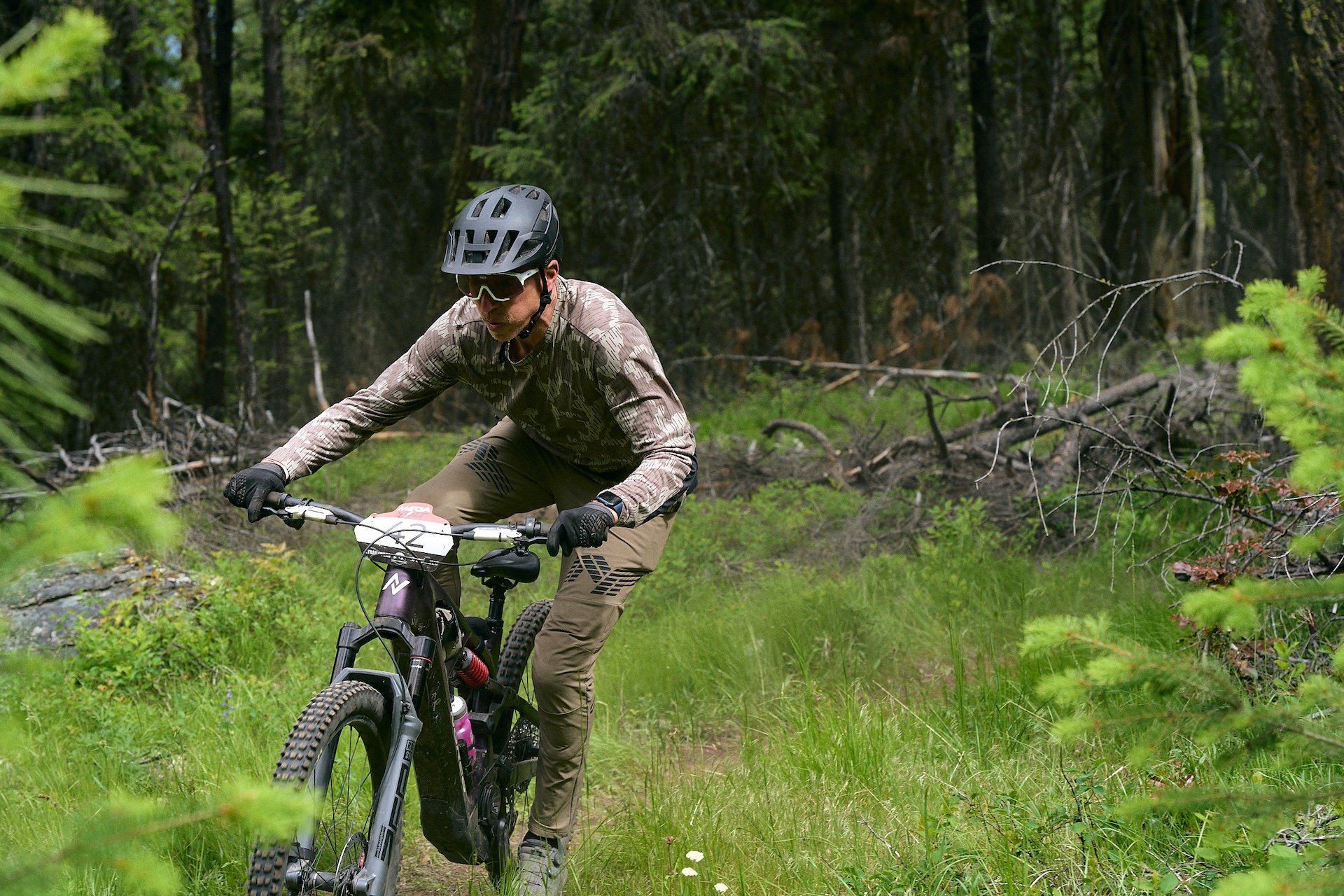
The only time the Vivid Coil didn't feel great was pedalling through chunky stuff. Who knew there would be so much pedalling in the E-Enduro portion of Megavolt? Photo - Deniz Merdano.
Vivid To Do List
After working on the wallow I feel in some pedalling situations, by adding some rebound damping and maybe some compression, I think I'll swap back again and see if my impressions line up with what I noticed when I went from air to coil. I feel quite happy on the Vivid Coil but I suspect I'll be happier still when I swap the Vivid air back on. The only way to determine this with some certainty is with back to back testing.
DAMPER: RC2T
HYDRAULIC BOTTOM OUT: Adjustable
SPRING: Coil
WEIGHT: 902g
MSRP: $ 619-649, € 699-729*, £ 629-659*
*includes VAT
Height - 6'/183cm (mostly legs)
Weight - 165lbs/75kg
Inseam - 37"/94cm. (turns out I hadn't measured correctly previously)
Ape Index - 0.986
Age - 58
Trail I've been stoked on lately - Sam's Dad's Trail
Bar Width - 760mm
Preferred Reach - 485-500mm
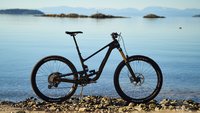

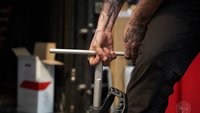

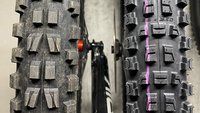
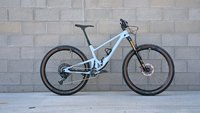


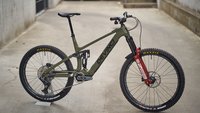
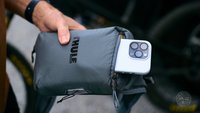
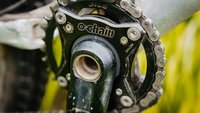
Comments
Cr4w
1 year ago
It feels like RS has reached iphone levels of consistency and incremental improvement.
Would I get an upgrade for my shock or fork if it was available at my next service? Probably.
Would I be happy to get one on my next complete bike? Definitely.
Should I sell what I have to get the updated version? No.
Reply
Andy Eunson
1 year ago
Yeah. I mean there have been forks with these amounts of travel for a really long time. Why is it taking so long for manufacturers to get it right? That’s the cynical view I suppose. A big part of a new fork, new tires, new whatever feeling better is that the thing is new and being compared to something that’s used and perhaps worn out or in need of service. Just because something is new doesn’t mean it’s better. Certainly things do improve over a design life but my feeling these days is that mountain bike stuff is pretty mature and so called improvements are very minor.
Reply
Jerry Willows
1 year ago
it took the bike industry over 30 yrs to get geometry (sort of) dialed and that's just 2 right triangles.
Reply
Cr4w
1 year ago
My last Fox 38 was a total dud and I've been rotating through kind-of-ok forks for the last few years but my 2024 Zeb Ultimate 170 is pretty much perfect, as is my Ohlins RXF36. It's exactly what I need it to be, finally. I'm not at all keen to upgrade. This is the first I can remember being really satisfied with my fork performance.
Reply
Jotegir
1 year ago
Ha, you got the dud!
Strange how experiences can differ. I find my 2023 Fox 38 Factory and 2022 Zeb Ultimate to offer similar levels of performance, with slight favour to the Fox. But strangely, I didn't get along with my Fox 40 GRIP2 at all. If I recall, you're big like I am and we likely ride similarly technical terrain on average. I wonder if you just did get the dud.
Reply
Cr4w
1 year ago
Most people are thrilled with their Fox38s and had never heard of the issues I was having. Also I couldn't get fix the issues after multiple big servicings. I just gave up and moved on not will to risk a repeat I went Zeb and it's been great. It's got a very RS feel to it which isn't as nice as the Ohlins but given the price difference I am happy with the result.
Reply
Timer
1 year ago
Rock Shox is a perfect example of change for the sake of change instead of improvement. People are still debating which of the many air spring iterations is the best and some riders even upgrade their new RS forks with the older air spring to improve performance.
Reply
DancingWithMyself
1 year ago
I've got a couple of RS forks so certainly not a RS hater. One is a Charger 3 I rode for a while and then sent to Fluid Focus and got their custom piston (to which I think the new RS piston is somewhat similar). They also modified the shim stacks to suit me, so there was some noise as to what I was feeling when I got it back. But I had already burnished the bushings when I first got it, so that wasn't in the mix.
Maybe a bunch of it was the shim stacks, but when I sent it in I was struggling with it feeling harsh and divey, and when I got it back if felt less harsh but more supportive. It felt better by several orders of magnitude.
I'm no suspension guru, but I think the higher-flow piston is also one of the things Fox did with their update.
All that is to say that based on my limited experience (with all those caveats) and what I read trying to figure why I was frustrated with the Charger 3, I'd argue you're right as a general matter, but that piston redesign may move be a pretty big leap forward for most people.
Reply
HollyBoni
1 year ago
To me it's still pretty annoying that you spend a thousand bucks on a fork, and you might get one with tight bushings, or a CSU that will start creaking half a year later.
IMO first the manufacturers (not just RS) should work on that instead of coming out with incremental damper updates.
Reply
Andeh
1 year ago
Some questions I'd like answered if anyone knows, which I haven't seen answered in any of the launch day articles.
1) for a rider running a Charger 3 in the middle-ish of range (LSC +/- 0, HSC -1 from center), strictly from the damper side, will it feel any different? Is the middle still the middle, with the extremes moved? Or did the middle shift due to the wider total range?
2) assuming a rider keeps the same damping settings (assuming they've bracketed and arrived at a good setting), are the "new mid valve check spring" and "new IFP coil spring" going to have any noticeable feel, and what would that feel like?
I've already done a bushing hone on my RS forks, so that should address the changes on that end if I read between the lines on that topic.
Reply
D_C_
1 year ago
I have the same questions.
Reply
dano91
1 year ago
lol I ordered a SDU coil two days ago and this thing comes out. Any thoughts on a comparison between them?
Reply
Cam McRae
1 year ago
My guess would be that he Touchdown damper will be the biggest difference. Both good shocks but I'd like to ride them back to back to give more meaningful feedback because they are pretty close.
Reply
Jotegir
1 year ago
Is that really Hannah Bergman after hardline throwing that one footed table top in the picture there?
Reply
Dave Smith
1 year ago
It's Caleb.
Reply
Cam McRae
1 year ago
Good call. Correct caption but wrong photo. Updated now.
Reply
dknapton
1 year ago
I find my charger 3 damper to be pretty close to perfect. Got a setting I like and never have to worry about it now. Find it sits so much higher in its travel than charger 2, but not in a harsh way. I'm happy that Cam pointed out that he feels no need for the 3.1 as the 3 works for him.
Reply
Please log in to leave a comment.